[Review] Voice of Cards: The Isle Dragon Roars
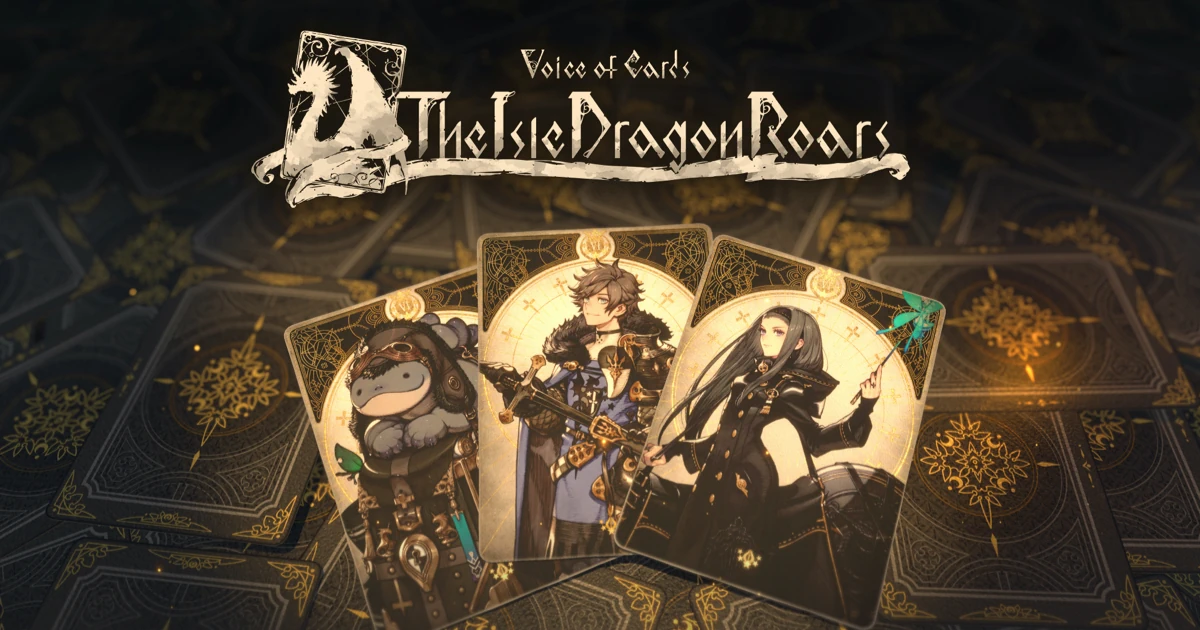
I know what you're thinking, but no, this isn't actually a card game.
While the sheer hysteria surrounding Nier: Automata was enough to propel Yoko Taro from a niche creator with a dedicated fan following to an almost household name within gaming culture, his most recent focus has been on a much more lowkey series. Voice of Cards: The Isle Dragon Roars launched in 2021 and it was quite the departure from his existing library of 3D action games; a turn-based RPG pared down to its barest essentials and presented as if it were a tabletop roleplaying game with every single event and character being narrated by a single GM who represents the entire world to the player via the medium of cards.
Now, let’s roll perception and take a look just how Alim Game Studio’s transition from mobile games to full console releases worked out for them...
Story
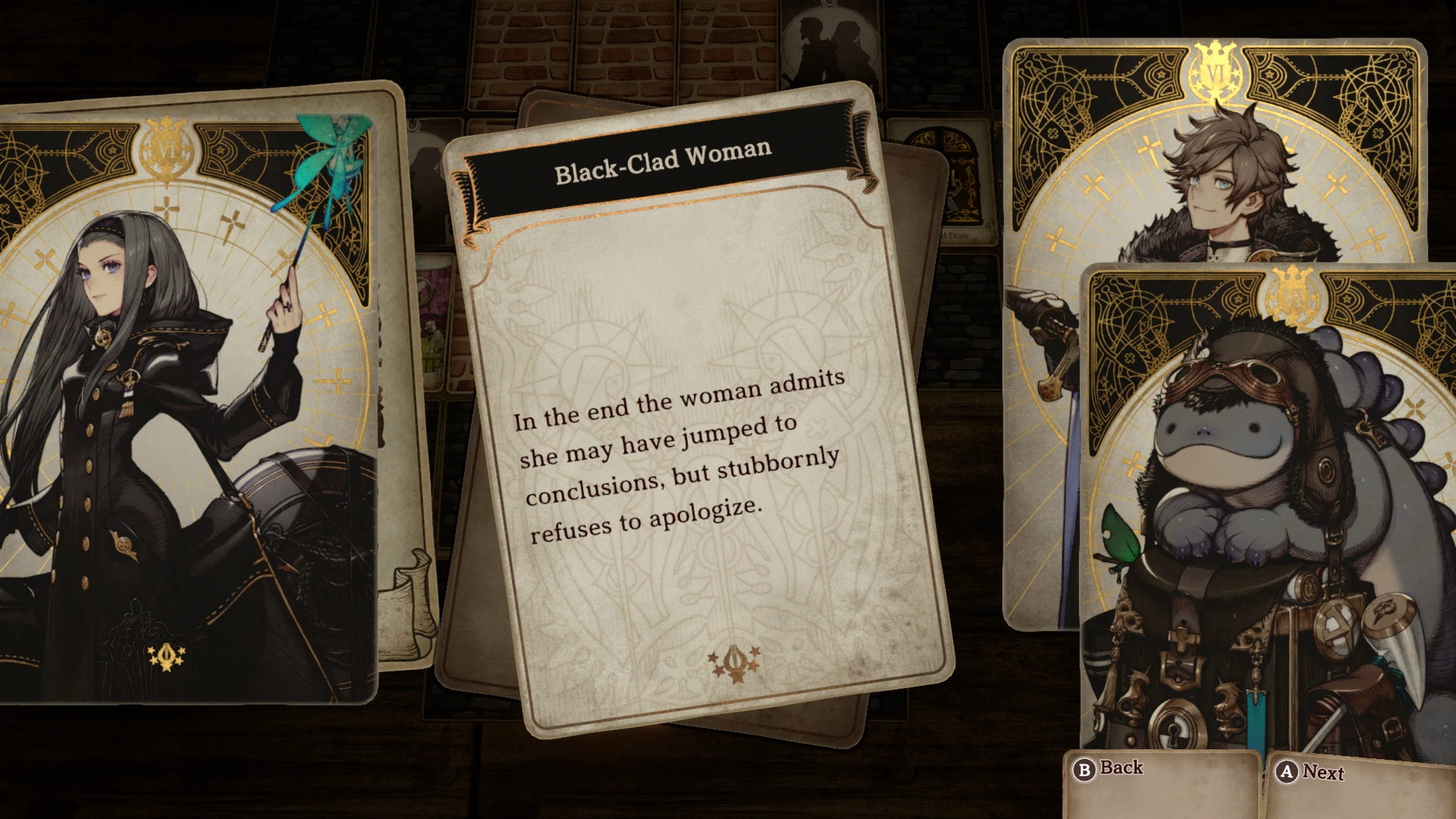
The bickering misfits that make up the party are a lively lot to follow.
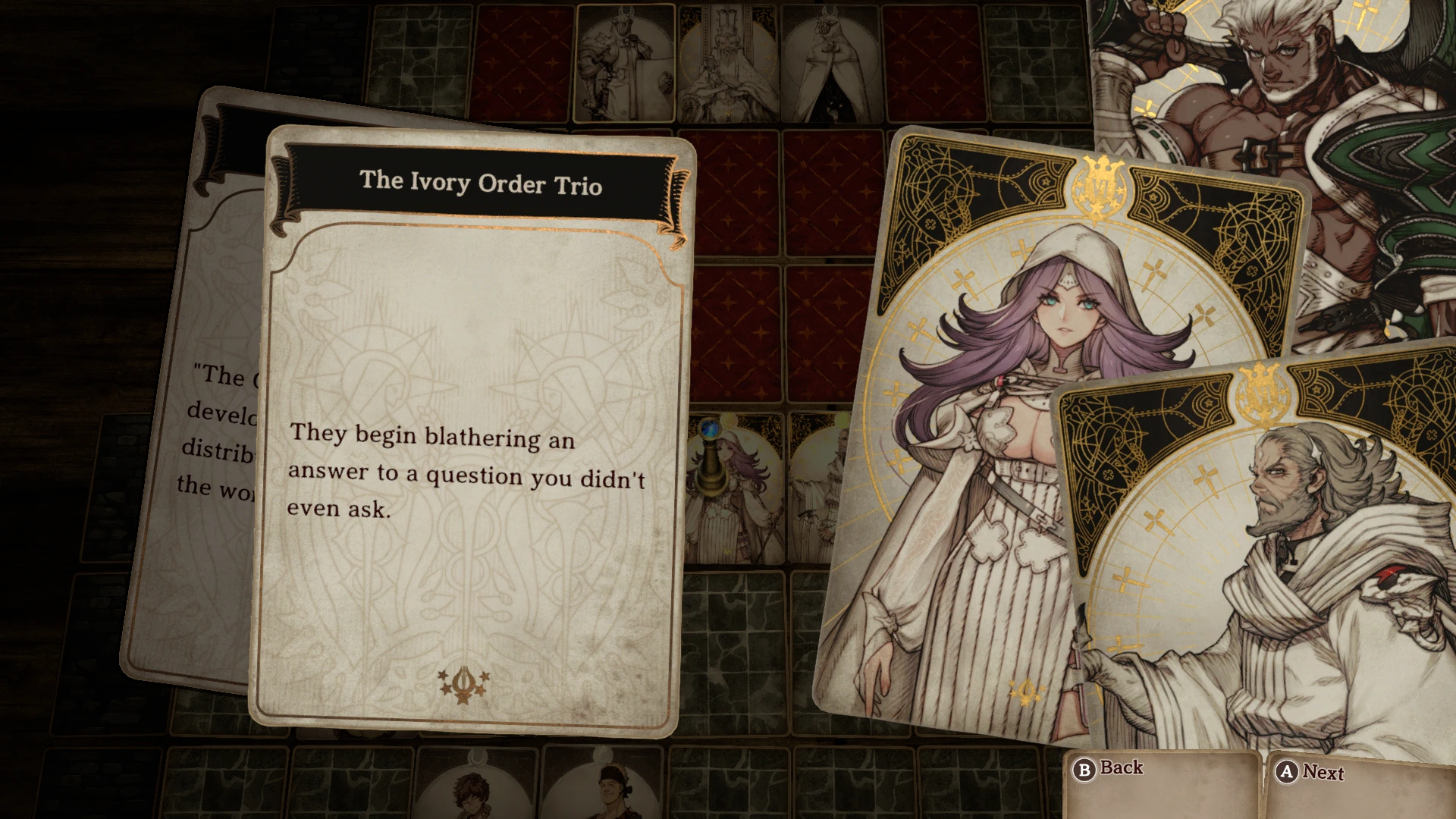
The Ivory Order serve as a foil to the player's party.
In classic Yoko Taro fashion, The Isle Dragon roars delivers a story rich with flawed characters, an oft-times dark sense of humour, and an ultimately satisfying emotional undercurrent throughout. While it’s hardly the most intricate plot, this is entirely by design, with the team explicity stating they wanted to evoke the feeling of classic RPGs such as the first Dragon Quest game.
Starring a cast of mismatched ne’er-do-well bounty hunters, outcasts, and eccentrics, our party are sent out on a quest by the Queen of the realm to slay a dragon which threatens the safety of the realm. Opposing the party are a trio of elites from the Ivory Order, a powerful institution of templar-like figures who create and distribute medicines which the world relies heavily upon. Throughout the party’s journey they serve as a perfect foil for the player’s own party, often perceived as the real heroes of the realm despite their arrogance and disregard for others while the hero party of scrappy rogues actually end up doing more good for the people they encounter. A few twists along the way are of course a classic staple of Yoko Taro’s works, some humorous, others dark, but most all land pretty solidly even if one or two were pretty predictable.
Other little bits of bonus story come in the form of card stories – a throwback to the weapon stories of Taro’s past works – wherein the player can read a little bio on various characters and enemies throughout the game and unlock an extra flipside to the story by meeting various conditions. On the road the party may also encounter random events, from stuff as simple as encountering a wandering merchant to overhearing a group of bandits discussing where they buried their loot. Little moments like these and the choices they often present allow the player to engage with the world that little bit more and offer a nice break from random encounters.
Gameplay
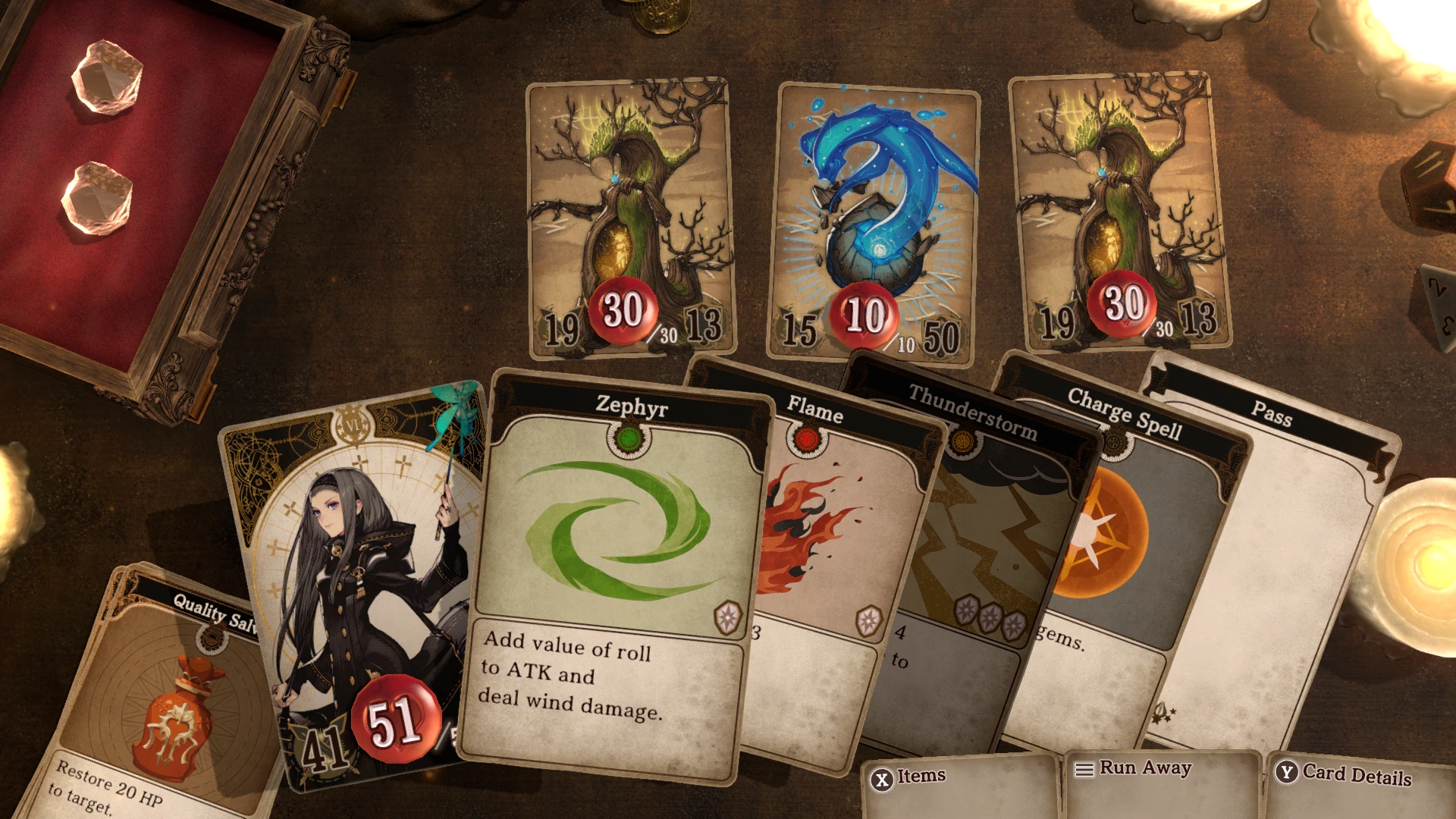
Each character has a selection of 4 combat skills you can set when out of combat.
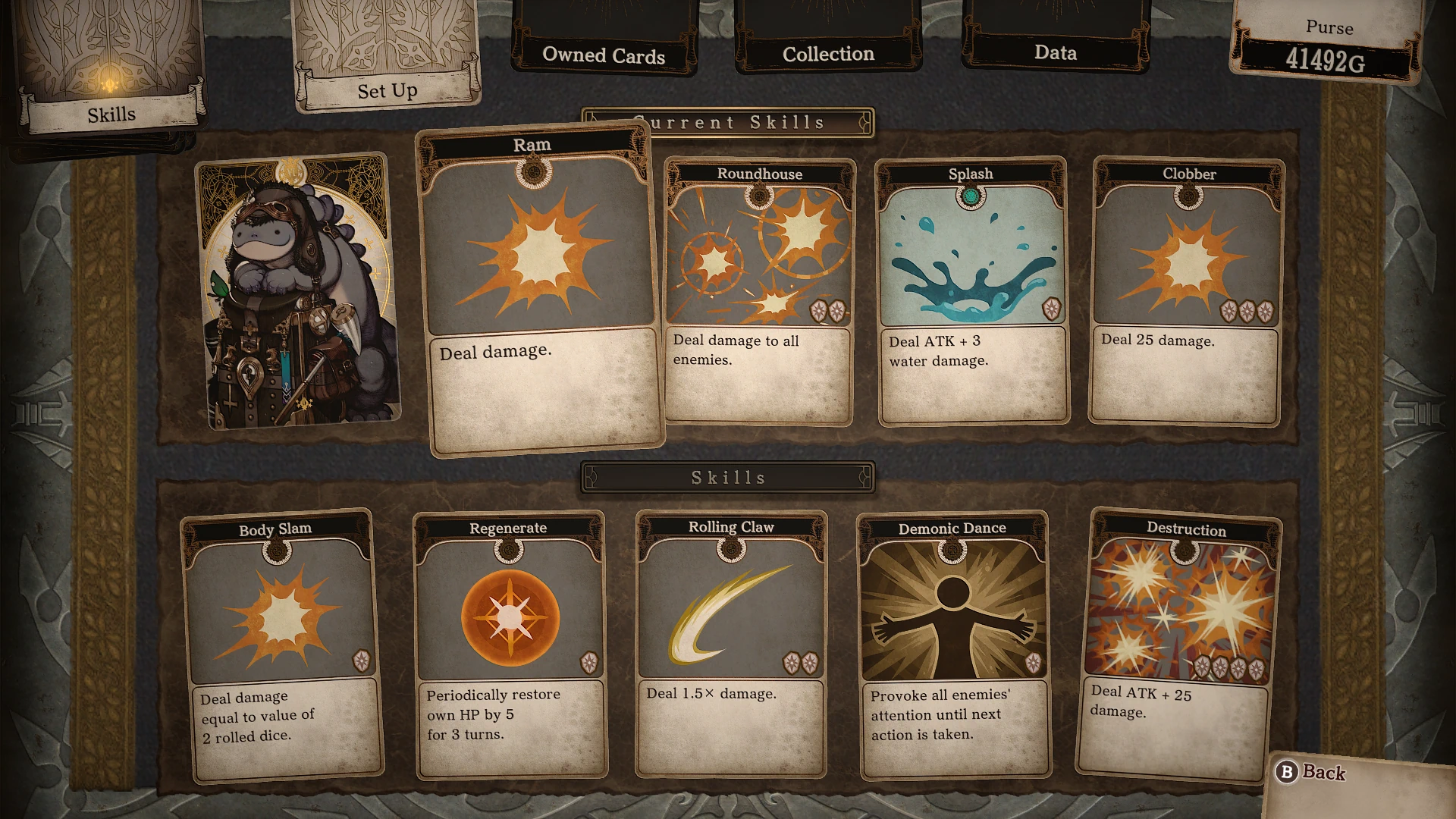
Every character has their own unique role in combat and skills that complement that.
I must state very clearly here – this is NOT actually a card game. Voice of Cards is a simple traditional turn-based RPG which is actually probably most comparable to Paper Mario of all series as far as gameplay goes. Each character is equipped with a weapon, armour, and an accessory, and their pool of moves is limited to a choice of 4 chosen by the player as well as the always available option to pass their turn.
In combat, attack and defence values are absolute values – if a character with 30 attack hits an enemy with 20 defence, then you’re doing 10 damage. Certain attacks add special effects like a dice roll of extra damage, a chance to inflict a status ailment, or elemental damage which may be stronger or weaker against certain enemy types. Most attacks beyond the most basic cost gems to use, a resource shared amongst the party that the player earns 1 of at the start of each character’s turn, though certain moves and items allow the player to generate more. Turn order is determined by a speed stat, a simple value which by the end of the game hardly goes far into the double digits.
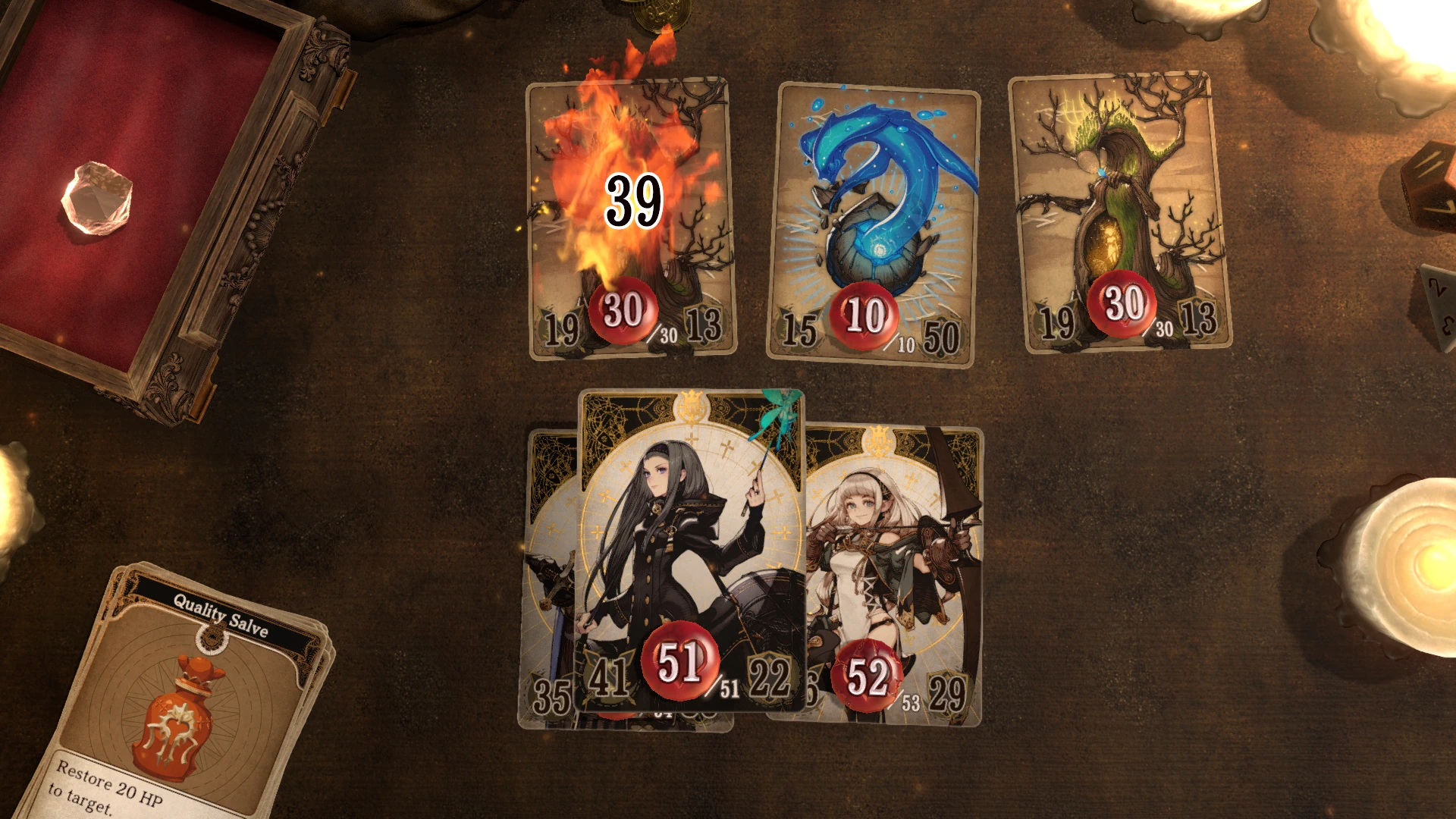
Damage is a simple affair of subtracting defence from attack, and applying elemental weakness if applicable.
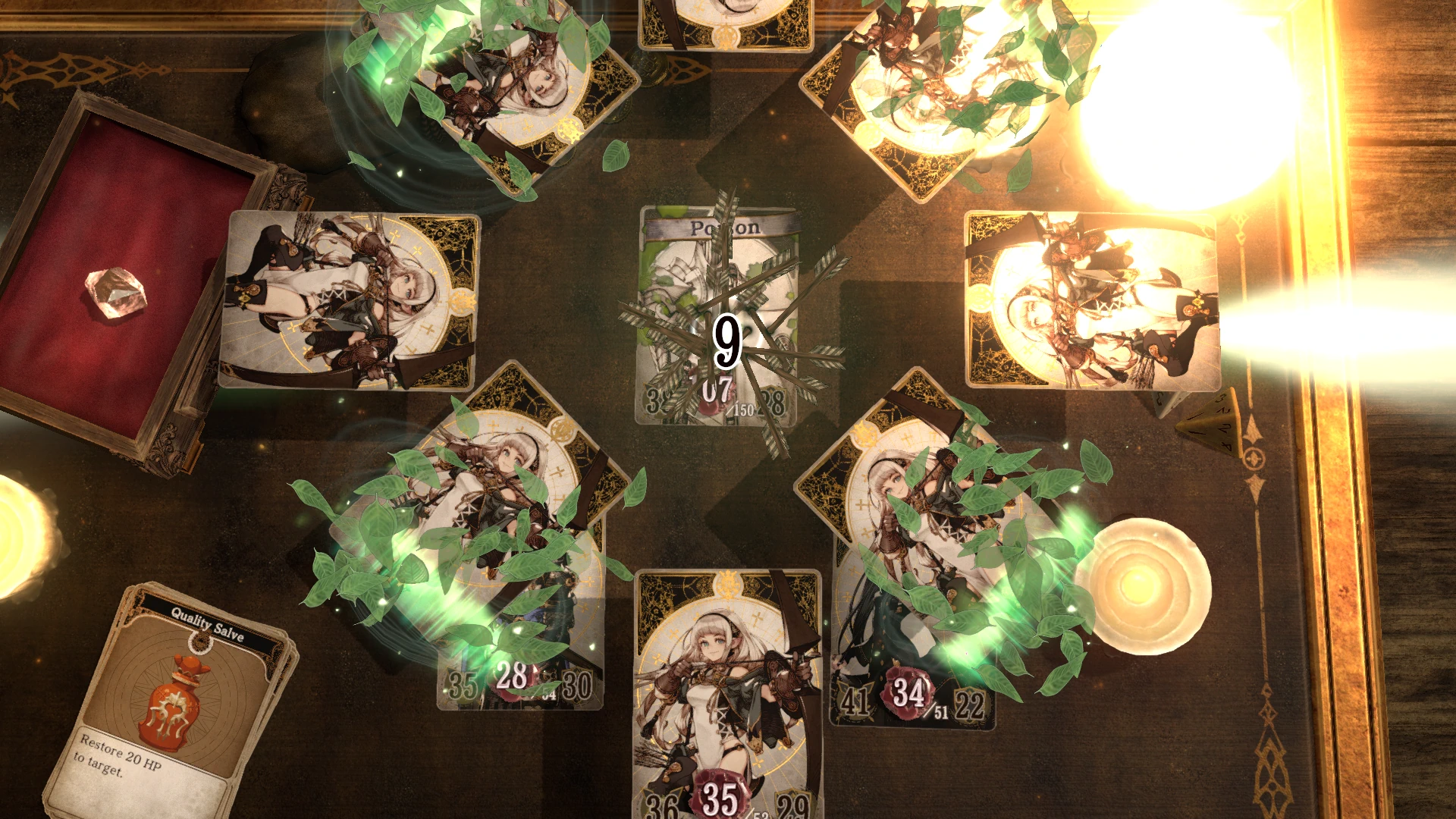
The simple card presentation doesn't mean powerful attacks aren't visually dramatic.
Combat is simple but satisfying, with each character having a very specific niche in combat, such as Ridis’ focus on damage, Bruno’s support buffs, and Melanie’s wide array of element types. Perhaps the main criticism I’d level at the game is that I rarely felt particularly challenged – only the final boss and post-game superboss gave me a satisfying challenge, but I was still able to defeat both on my first attempt. Some of the dungeons can also be rather bland and samey, however they don’t tend to go on for too long so it’s not the most aggravating thing to deal with.
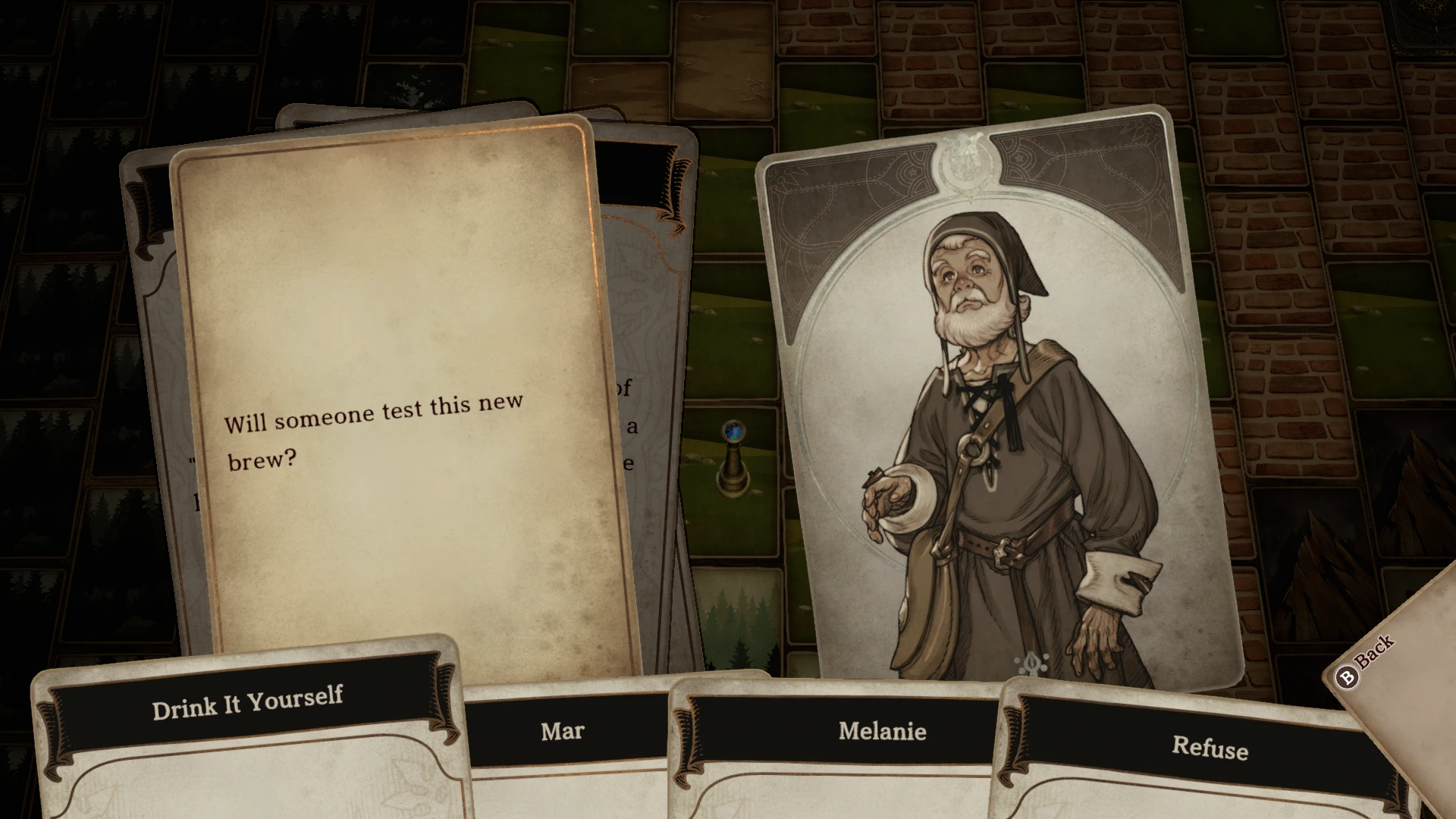
Random events on the overworld add a little spice to exploring.
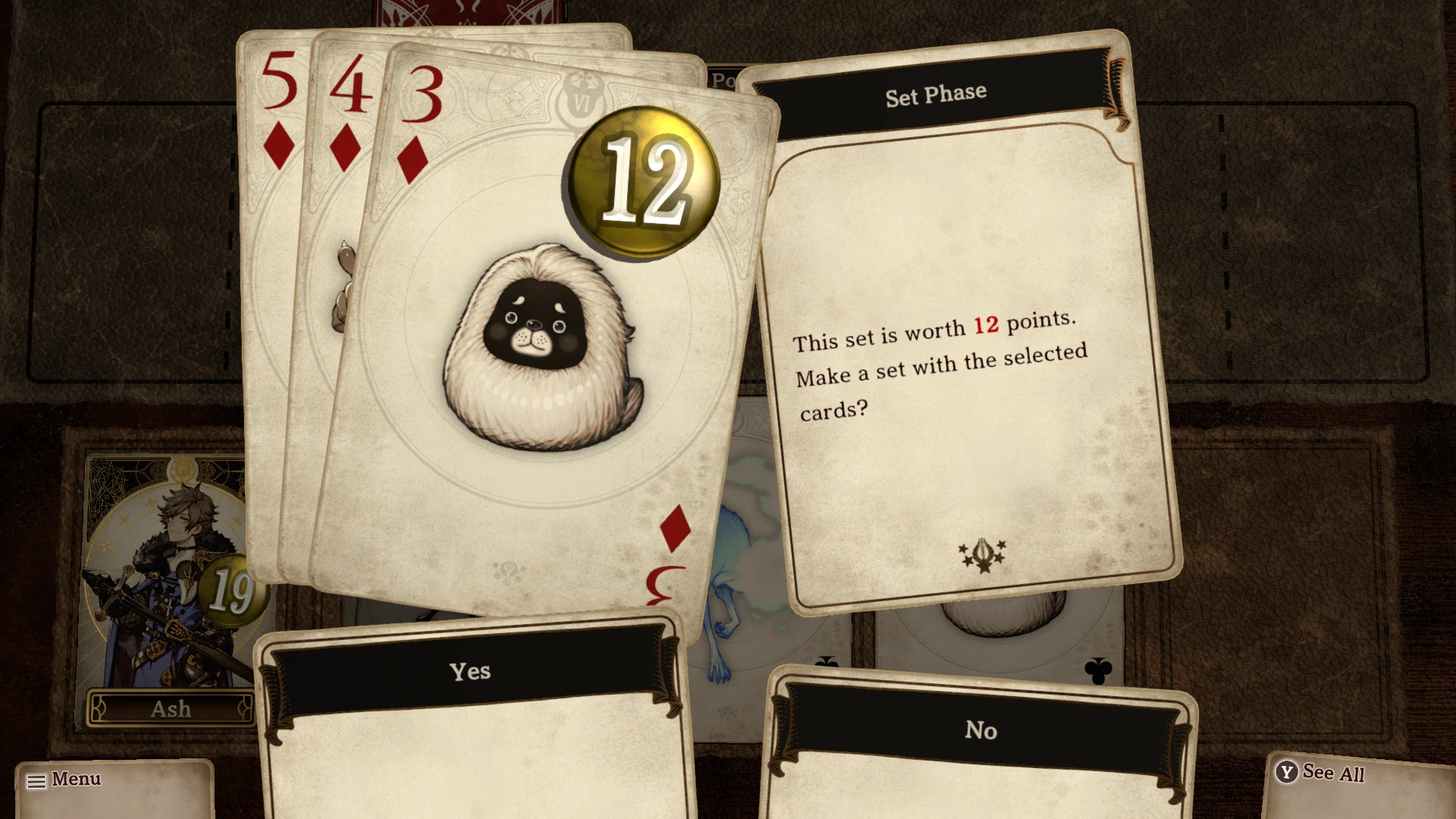
The game parlor offers a break from adventuring to play some cards.
Moving to the topic of side-activities, there is of course the whole card-based world to explore, revealing the terrain card-by-card as you explore and fighting off enemy encounters, discovering the aforementioned random events, and sometimes discovering an odd NPC or treasure on the overworld. As well as that, most towns host a game parlour where the player can take part in a card game involving creating sets of cards with sequential or matching numbers and earning points based on the sum of their value. While it was an alright once off amusement, I didn’t find it particularly compelling, though apparently the devs thought it was compelling enough to make it the sole multiplayer game feature. Very strange.
Graphics
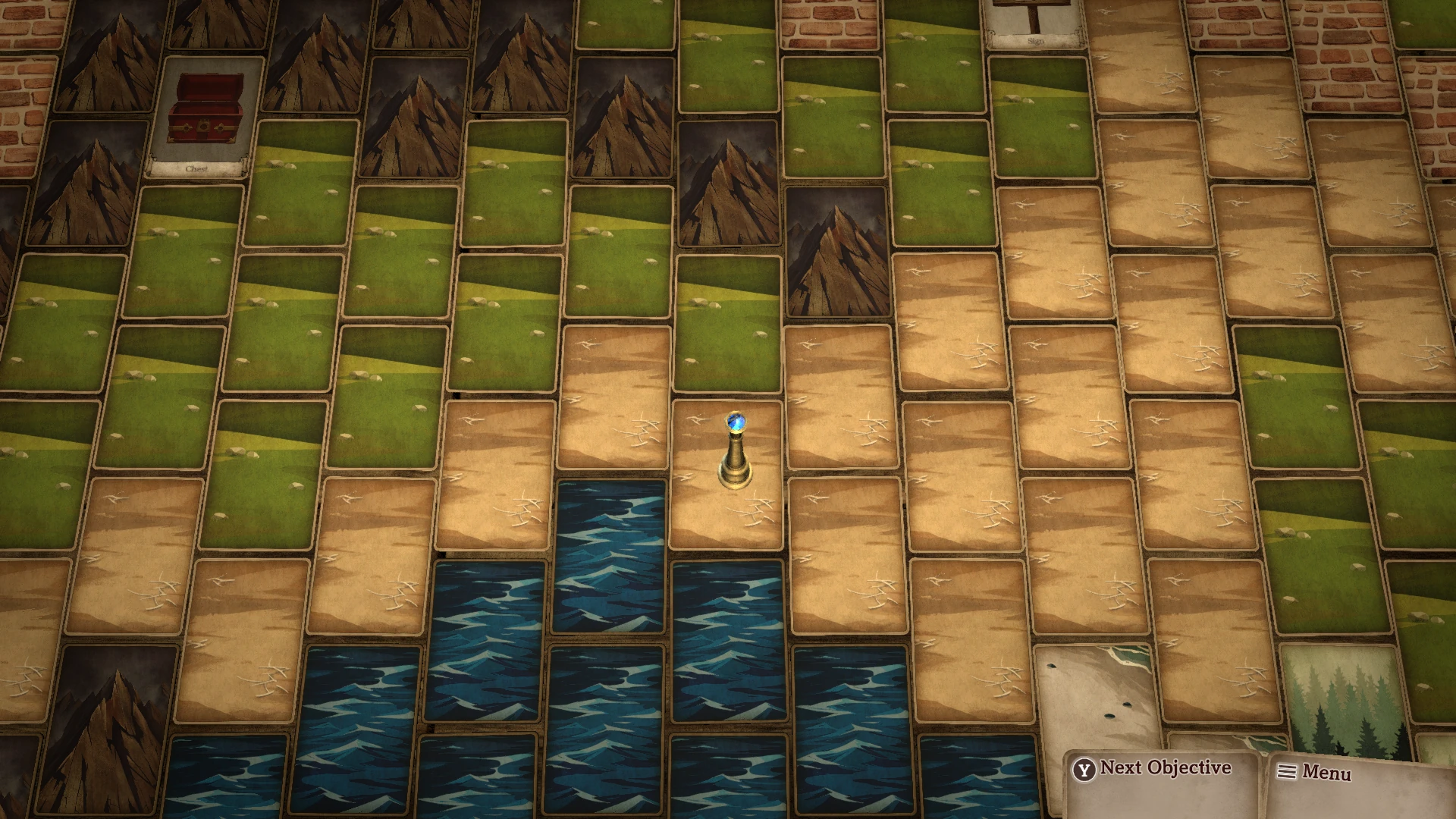
Cards make up the world at large in Voice of Cards.
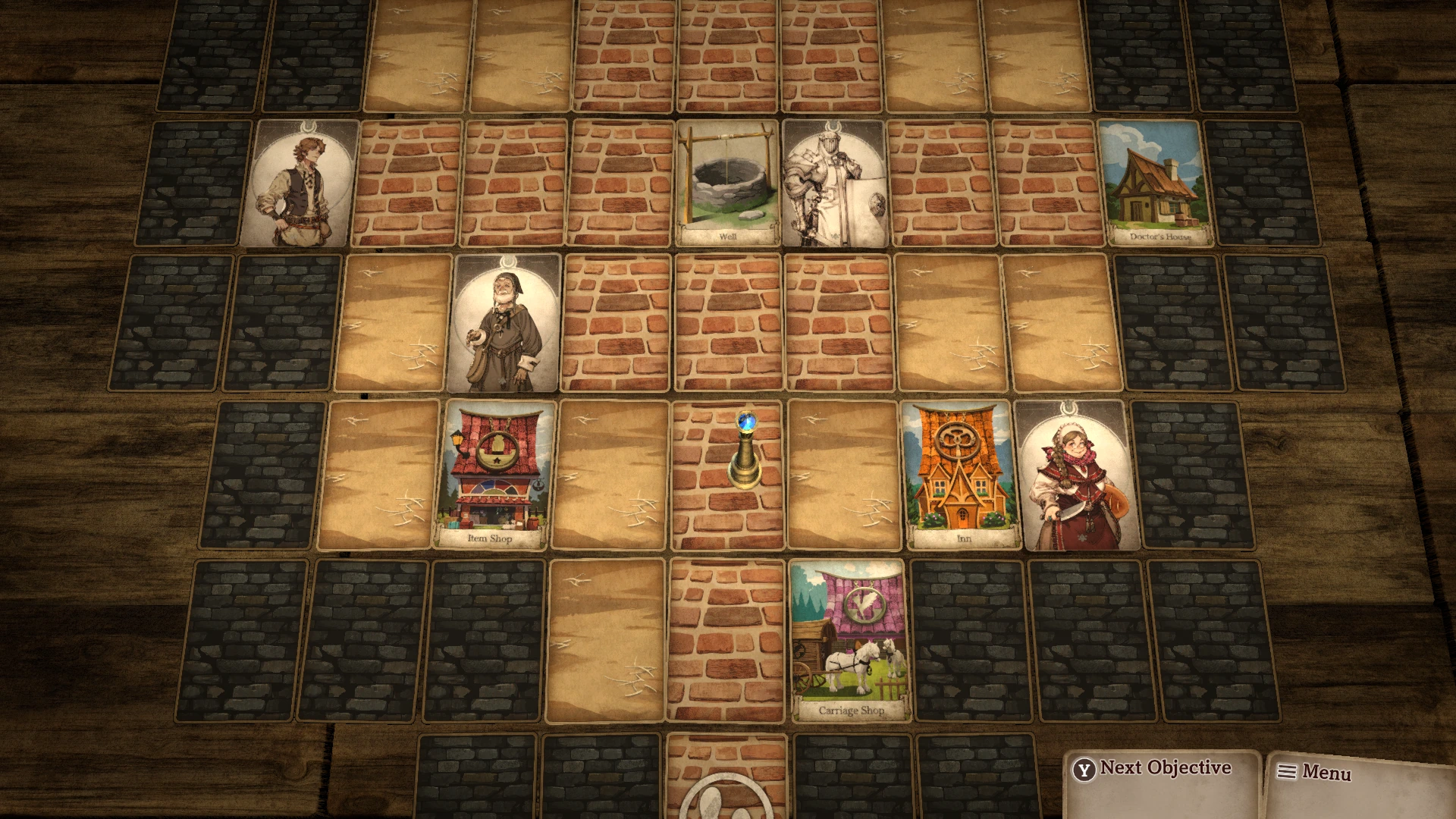
Even the towns and dungeons are made of cards.
Voice of Cards’ presentation is simple owing to the format its committed to – a world made up of building blocks in the form of cards, but thanks to Drakengard series artist Kimihiko Fujisaka the world and its characters are depicted with vibrant and colourful illustrations that just ooze personality.
The use of cards doesn’t detract from the depiction of story moments or combat either – clever but simple use of card positioning, overlay effects, and the paired narration ensure that the player knows exactly the vibe of a scene, and the use of special effects and special critical hit animations mean that combat has its own unique flair with no two moves feeling the same.
Oh but they do also make that PC port mistake of only including Xbox controller prompts. Tsk tsk tsk.
Audio
One of the game’s other most distinctive features, of course, is the singular narrator who provides all the voicework for the entire game. Todd Haberkorn provides a wonderful deep, relaxed voice which invokes the feeling of fireside storytelling. Moments of humour are often delivered with deliberate flatness to heighten the absurdity, while the slightest hush can enter his voice during melancholic moments. It’s a perfect fit for the game and proves vital to the successful delivery of its vibe.
Also returning from Taro’s past projects is music production studio Monaca, who are responsible for many of the phenomenal soundtracks from the Nier and Drakengard series. Unlike in the past however, Keiichi Okabe opted not to take up the role of main composer and instead had composer Oliver Good work on the majority of the soundtrack. The Isle Dragon Roars’ soundtrack has a distinctly Celtic flair to it with energetic string instruments carrying the wonderfully energetic boss theme ‘Pulsating Power’ while soft violinwork and the vocals of Saki Nakae and Yukino Orita carry the game’s softer songs superbly.
While it’s almost a shame that the game’s OST is only 12 songs in total, the relatively short 12 hour playtime sees the game completed before it starts to wear out its welcome.
Conclusion
Voice of Cards: The Isle Dragon Roars is a fantastic execution of a low-budget mini RPG, providing a satisfying gameplay experience and an enjoyable story with wonderful visuals and music accompanying it throughout the journey. It’s a game that knew exactly what it wanted to be and took the most efficient root possible to become it, and in an age where triple-A game development is becoming excessively bloated and striving for ludicrous heights, it’s a reminder that sometimes it’s a good idea to go back to the basics every once in a while.







